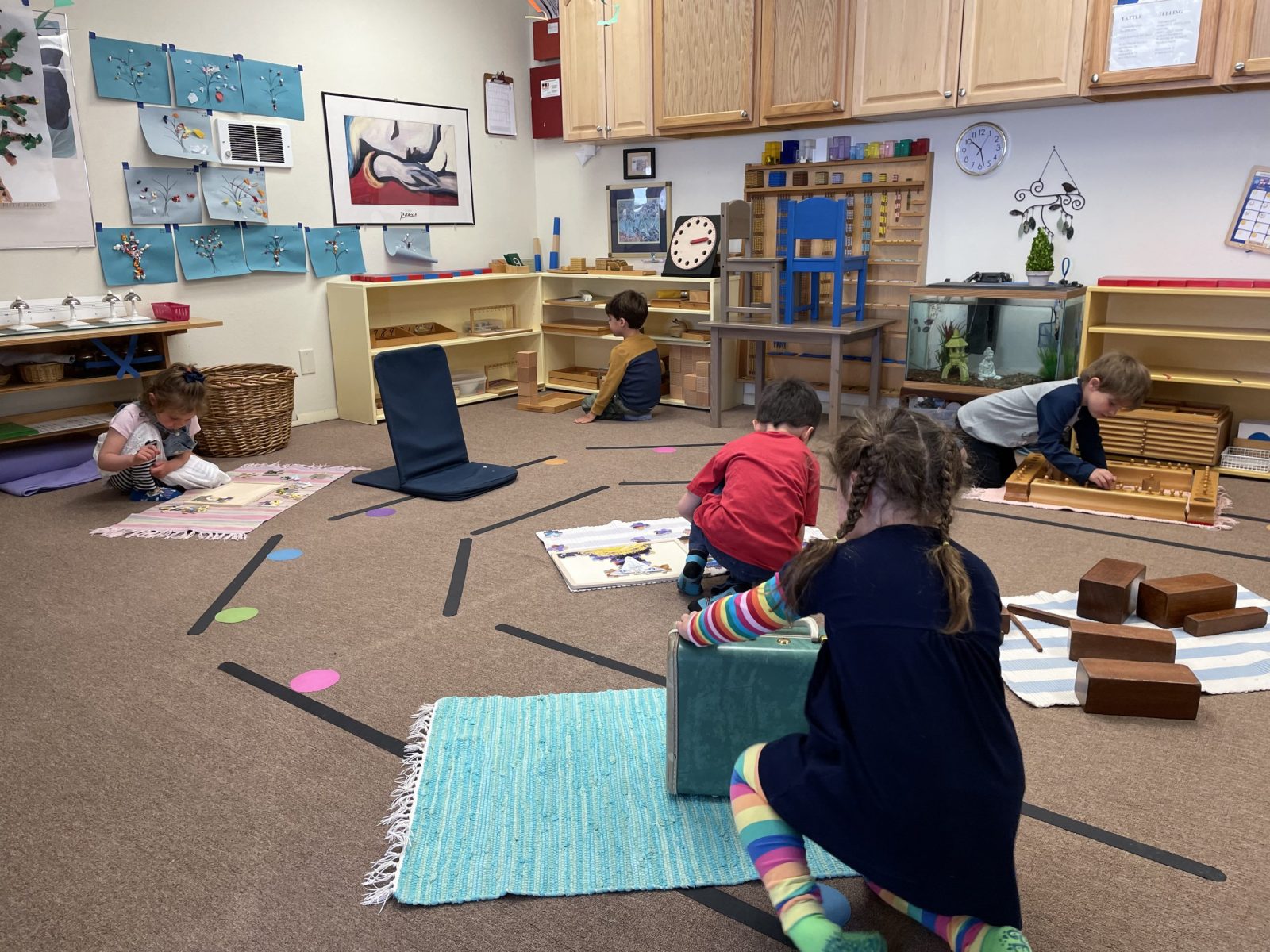
Inside Our School
“Montessori is an education for independence, preparing not just for school, but for life.”
— Maria Montessori
What You Will Find In Our School
At Montessori School of the Tetons, our thoughtfully prepared environment reflects our commitment to high-quality childcare in Jackson Wyoming through authentic Montessori learning.
Practical Life
Our classroom is carefully designed to include each aspect of a Montessori experience for preschool-aged children. The Practical Life area includes activities designed to develop fine motor control and coordination while expanding skills that make up the foundation for academic success later in life. As children concentrate on activities like scrubbing, polishing, washing, pouring, scooping, and preparing food, they are reinforcing their innate sense of order and developing the ability to organize tasks through sequencing. Independence is fostered for each child through the confidence imparted by caring for oneself.
This foundation is central to the nurturing, hands-on approach to childcare in Jackson Wyoming that families value at Montessori School of the Tetons.
Sensorial
The Sensorial Area is filled with materials that allow a child to discover how things relate to each other and the environment. Sensorial materials compel a child to use all senses to understand the world. These materials are designed to go from simple to complex, and provide a wide variety of experiences to enhance language skills. The refinement of the senses leads to the acquisition of all components for learning abstract concepts later in life.
Language
The Montessori language curriculum consists of activities and games to satisfy the young child’s curiosity about words, sounds, and expressive language. Games are played to provide the foundation for reading through the use of phonics. Children master the alphabet by tracing sandpaper letters while reciting each sound. Hands are used to trace shapes, write letters, and color designs in preparation for reading and writing. Many Montessori children learn to read phonetically between the ages of 4 and 6 because of their fascination with the language materials.
Mathematics
Mathematics comes alive in a Montessori classroom. Beginners start with the ten number rods which range in length from ten centimeters to 1 meter, giving a sensorial feel and weight to each increase in numeral. Concepts are taught in a concrete way, with beads that ranging from one unit bead to the thousand cube, made of one thousand units beads, which can be counted on a very long bead chain. Addition, subtraction, multiplication, division, squares, cubes, and their roots are all explored in a concrete way with the materials.
Cultural
Cultural awareness is a key component of a Montessori classroom. Children learn about the whole world through art, storytelling, music, dance, zoology, botany, geography, and scientific classification. Materials rotate throughout the year and with the interest of children in the program. Children learn to appreciate the similarities and differences of cultures all over the world.
Classroom Leaders
Classroom leaders emerge within the Montessori classroom and compassion is fostered through the most important component of the Montessori Method, which is the inclusion of multiage groups of children. The oldest children in the classroom are always excited to pass on their knowledge to the younger children, who look up to them with the longing to get to be the “big kids.”
This multi-age structure supports social development and leadership within our childcare program in Jackson Wyoming.
Peace Education
Peace education is an integral part of the classroom community. The children practice conflict resolution by using the peace table to resolve differences by speaking from the heart and taking turns describing feelings and resolutions. Dr. Montessori believed world peace was achievable if we could all understand our differences.
Art
Art and creative thinking skills are embedded in many of the Montessori Materials throughout the classroom, and activities that support artistic expression are available every day for children to choose.
Science
Our science shelves are full of exciting activities. Children are free to explore many concepts related to electricity, magnetism, inclined planes, and the natural world around us by growing their own plants and maintaining our worm bin among many other subjects.
Music
The Montessori Music curriculum includes training the ear to hear the proper tones of the scale of C using the Montessori Bells. Children may choose to learn music notation and how to read music with the Bass and Treble Clefs. Music is included daily during our morning meeting time, and we often listen to various musical artists during the day.
Movement
Our classroom includes Movement as an integral part of the learning process. We play games with all of the materials by using strategies of moving across the room and connecting movement to all concepts through game playing. During the regular school year we partner with Galliope Dance, with a special movement class for all children enrolled.
“There is not much we can say other than thank you so much from the bottom of our hearts. We are so grateful and lucky to have such a wonderful school in our community. I only wish our daughter could continue past Kindergarten with you. She has flourished under your guidance and wisdom.”
The Koehlers
Ready to See Our Classroom in Action?
A Montessori classroom is best experienced in person. From hands-on materials to peaceful routines and meaningful social interaction, every part of our environment is intentionally designed to support high-quality childcare in Jackson Wyoming.
We invite you to learn more about us and schedule an observation to learn more about why you should choose Montessori and see how our classrooms foster independence, curiosity, and confidence every day.


